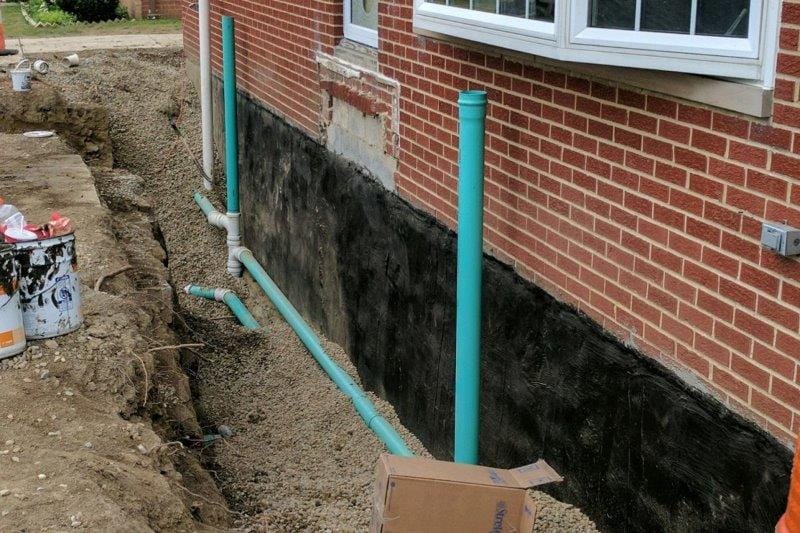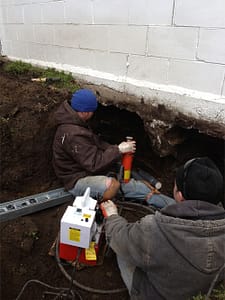The Basic Principles Of Best Basement Waterproofing
Table of ContentsIndicators on Best Basement Waterproofing You Need To KnowLittle Known Facts About Best Basement Waterproofing.8 Easy Facts About Best Basement Waterproofing DescribedMore About Best Basement WaterproofingBest Basement Waterproofing Fundamentals Explained
usages excavation strategies toward the bottom of the framework's structure. entails removing wetness after it has actually gotten in the cellar. AdvantaClean's qualified experts and specialists will certainly situate the water source. If wall or piece cracks are present, we will inject polyurethane and epoxies into the splits and seal the compromise, avoiding additional wetness from getting in.

If there's condensation outside of the foil, you have high moisture in your cellar. Repair it with a portable area dehumidifier or a whole-house humidifier system rather than waterproofing products. If the aluminum foil has condensation on the inside surface (alongside the wall), the soil around your house might be naturally damp from a high water table or inadequate soil water drainage.
You can waterproof just your interior walls, which may solve the issue. Or you can waterproof your outside wall surfaces, which is a far better wager but more pricey. Right here's the scoop on the various types: These thick coverings are cement-like. Once they dry out, they adhere completely to concrete and masonry wall surfaces (Best Basement Waterproofing).
Examine This Report about Best Basement Waterproofing
Swirl the brush at the final phase of application to give the wall surface an eye-catching, finished appearance. Concrete waterproof layers can't be put on formerly painted surface areas; examine the label. A 5-gallon pail expenses concerning $60. Likewise referred to as densifiers, they are appropriate just for walls that have not been painted or secured.
Yet you comb, roll, or spray it on a lot more heavily one gallon covers just 75 square feet, not the 300 square feet common with conventional paint. Water-proof paint is fine for DIY application. You can apply it over repainted surfaces, and paint over it once it's healed (one gallon expenses $37).
It can set you back $10,000 to $15,000, depending on the job required. Exterior waterproofing includes excavating all around the home to the full deepness of the foundation walls, then setting up a water-proof covering or membrane topped by water drainage panels.
We've all been captured in a storm without umbrella or raincoat (Best Basement Waterproofing). And it's always a dish for disaster: whatever's damp, your hairstyle is spoiled, and things are obtaining mildewy. A cellar without waterproofing is sort of like that. Minus the spoiled hairdo component. Your basement doesn't wish to go via a downpour without proper defense equally as much as you don't intend to.
About Best Basement Waterproofing
If you've done your research study, you 'd understand there are two kinds of waterproofing: interior and exterior. It can get perplexing what they both mean, which one's a better investment, and what will actually maintain the water out. Do not stress, we created this blog to easily specify both approaches for you and discuss the pros and disadvantages of each.
Outside waterproofing is Learn More a waterproofing method that entails sealing your home from the exterior. It's type of like a moat around a castle. It entails digging a trench around your whole home to the foundation (about 8 to 10 feet down). The structure walls Look At This are after that cleaned, secured, and covered with a water-proof membrane layer or sealer.

The Only Guide to Best Basement Waterproofing
It's a much more involved process that needs excavating up your lawn, which is expensive and lengthy. Outside waterproofing involves removing every little thing surrounding your house, including decks, driveways, pathways, landscape design, air conditioning units, decks, and so on. If any one of the work was done improperly and water is still entering your cellar, there isn't much you can do to remedy or fix it.
Inside basement waterproofing involves waterproofing from the inside. Any kind of water that leakages into your basement is rerouted before it touches your flooring. It's sort of like putting on a raincoat under your garments. It includes two points: a water drain track and a sump pump. It works by sealing the within of your cellar wall surfaces and floorings so water that attempts to go into is channeled out through a sump pump.
It's a reliable method to waterproof your basement - Best Basement Waterproofing. The drawback of interior basement waterproofing mostly has to do with the setup procedure. This method needs stored items, furniture, and built-in shelving or cupboards to be relocated from touching the basement walls. And throughout setup, your basement can not be utilized. The greatest difference in between both techniques is you could look here this: Exterior waterproofing is a preventative solution and interior waterproofing is a corrective option.
5 Simple Techniques For Best Basement Waterproofing
Finally, exterior and interior basement waterproofing are both efficient methods of shielding your home from water damage. Exterior waterproofing develops a barrier that stops water from entering your home, while indoor waterproofing redirects water that does enter your home. And it's vital to keep in mind that exterior waterproofing is a costly and disruptive installment process when contrasted to indoor waterproofing.
Whichever method you choose, make certain you choose a dependable and trustworthy professional for the work. If you have any type of inquiries concerning basement waterproofing, please reach out to us.
You can fill in our type here, start a conversation in the lower right-hand corner, or call us at 1-800-827-0702.
Comments on “The Definitive Guide to Best Basement Waterproofing”